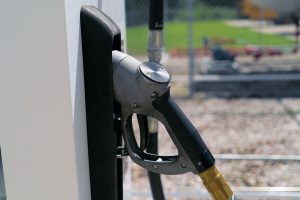Your Move: The First Step to Propane Autogas
 With a slow rise in gasoline and diesel prices beginning last year, and the federal government enacting stricter environmental controls, the total ownership cost of diesel vehicles is heading upward.
With a slow rise in gasoline and diesel prices beginning last year, and the federal government enacting stricter environmental controls, the total ownership cost of diesel vehicles is heading upward.
For fleet owners, this trend creates a well-timed opportunity to transition vehicles to clean-burning, cost-effective propane autogas. Propane autogas is the leading alternative fuel in the nation and the third-most commonly used fuel across the globe, behind gasoline and diesel. On average, the fuel is 30 to 40 percent less expensive than gasoline and about 50 percent less than diesel.
If you’re considering making the move to propane autogas, your first step is to assess your current fleet situation and decide how many vehicles to move from conventional fuels to propane autogas. While many factors will weigh on this decision, perhaps the most important is the stage of an individual vehicle’s lifecycle. High-mileage, fixed-route vehicles are an ideal fit for fueling with propane. Because these vehicles return to a central point at the end of each day, an on-site propane station can easily take care of their fueling needs. Propane autogas fueling infrastructure costs less than any other fueling station — conventional or alternative. For fleets that need to fuel away from headquarters, there are already thousands of propane stations across the U.S.
Another important decision to make is whether to purchase new vehicles or convert existing vehicles. Either way, you can experience cost savings and emissions reductions.
The greatest return on investment over the life of a vehicle comes when it’s a new vehicle outfitted from the start with a propane fuel system. One particular benefit is that a new propane-fueled vehicle will have the necessary hardened valves and valve seats installed directly from the factory. This valve configuration accommodates propane’s different lubricity (compared to gasoline and diesel), and keeps valves and valve seats from receding. Newly purchased propane vehicles should also come with the original equipment manufacturer warranty intact.
Comparing total cost of ownership between various vehicles also helps fleet managers make a more informed decision. The higher the annual miles driven and the lower the vehicle’s fuel efficiency, the more likely propane autogas will provide a quick return on investment. How much could your fleet save with propane? This savings calculator from the Propane Education & Research will help you measure the cost per mile.
Watch this space for the next steps to take when transitioning to propane, which include identifying the provider of the propane fuel system and determining a fueling strategy. Or join the conversation here.
View the blog post on Fleet Owner’s IdeaXchange here.













